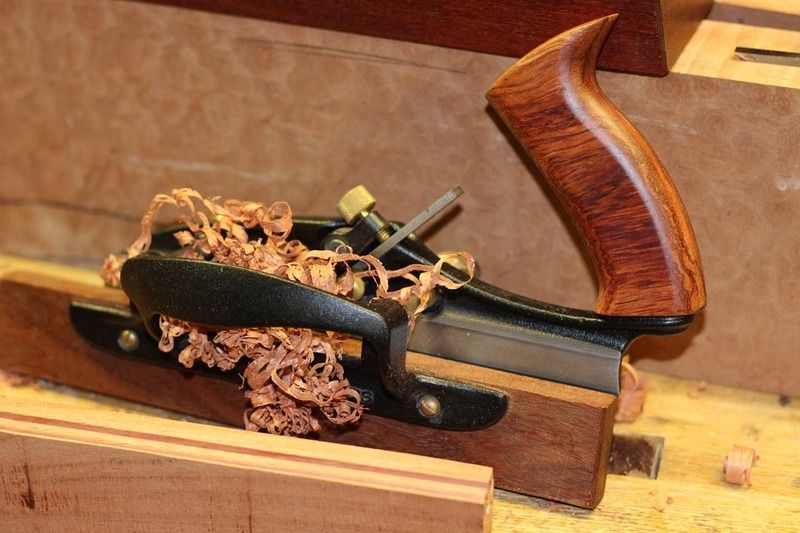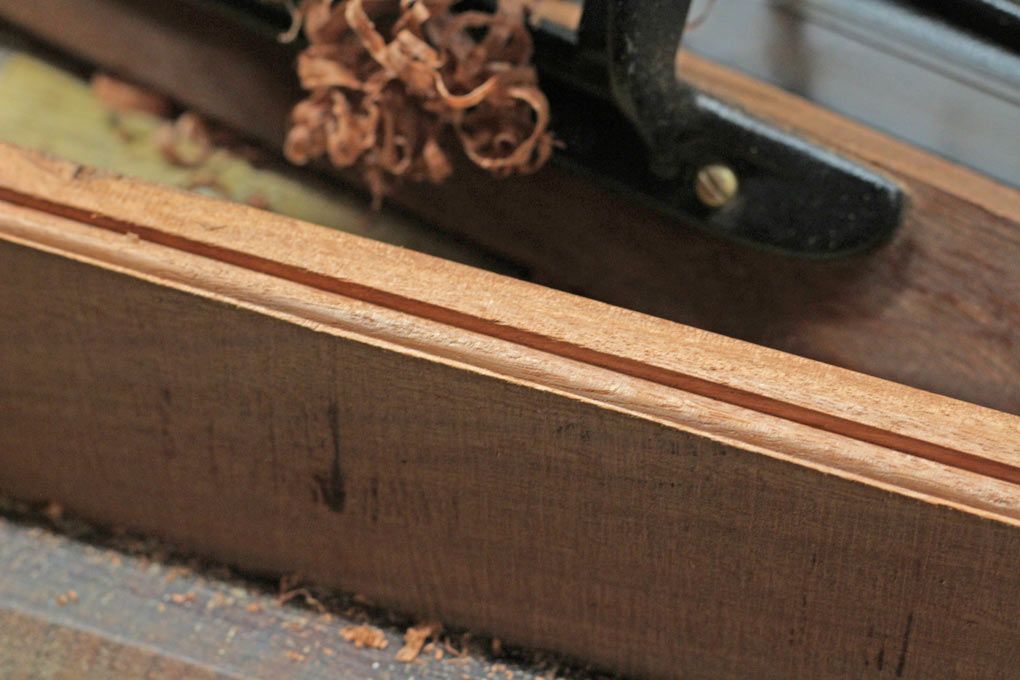I may have solved the "problem" of using a plough plane (the Veritas Small Plow) as a beading plane. I managed a little time only in the workshop to try this out. Of course, this may be an obvious solution, but I have not heard of another trying it out.
The concern is that a plough plane has no mouth to control tearout. The Stanley #45 has a poor reputation (my experience as well) with beading unless the grain is very straight. A similar poor performance was expected from the Small Plow conversion.
I had my Small Plow converted recently, largely out of curiosity. The beading blades arrived today. I did try the 3/8" blade on a small scrap of Makore, and it produced an excellent result.
For the experiment I chose to use a Stanley #45 beading blade of the same size. The plan was to add a 15 degree backbevel, which would create a 60 degree cutting angle. My reasoning was that, at this angle, a mouth is unnecessary to prevent tearout.
To test the set up, I turned the section of Makore around and planed into the steep grain. The result was successful - not as smooth a finish as with the grain, but no tearout. Planing with the grain at 60 degrees created a finish as smooth as the non-backbeveled blade.
Curlier shavings with the backbevelled blade.
Planed into the grain.
I tried a few other boards (into the grain of Jarrah and Pine) with similar results. I need to do more trials here before I can say that this is a reliable alternate method for beading.
Try it for yourself.
Regards from Perth
Derek


































